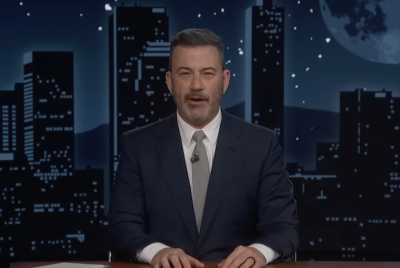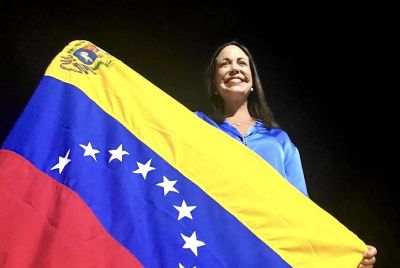Syrian Conflict: Does President Bashar al-Assad have majority support?

41 years ago, the Corrective Revolution put Hafez al-Assad, father of current president Bashar al-Assad, in control of Syria, a country he would rule for three decades.
In that time, the Baathist regime, (whose ideology originally relied on Arab unity and freedom from non-Arab control or interference) has throughout the years faced few challenges to its authority in the form of popular protests.
Establishing a fierce repression, combined with promises of change, kept Syrian dissenters at bay and confined opposition movements to private discussion groups or more recently to the internet and social networks.
The recent events of mass protests however divide the opinion as pro-Assad supporters maintain the regime is not repressive and that the majority of Syrians support and embrace it. They insist that all trouble comes from yet more Western manipulation to oust a regime that has been controversial for decades. Anti-al-Assad regime protesters, on the other end, stay firm and call for the end of a government they say illustrates a blatant disregard for basics human rights on a recurrent basis.
So who is right and who is wrong? Well trying to map out a complex situation to turn it into a Manichean depiction where characters can only be cast as ether the good, the bad or the ugly does not sound like a good place to start.
Maybe a first step should be to remember that Syrian politics was not always what it today resembles.
From the 1940s to the early 1960s the Syrian political landscape was shaped by a lively array of competing forces. The army however played a crucial role in events: there were three military coups in 1949 alone, followed by another in 1954, in addition to the Baathist-led coups of 1963 and 1966.
But on the other hand, popular politics was just as important, and provided a much needed counter voice as street demonstrations and strikes were seen as common forms of protest.
Arab nationalism was at the same time emerging and becoming stronger and the army, as a result, became increasingly politicised, as the calls for radical change increased and a schism between those who called for the implementation of a Soviet-style socialism and those who preferred an Arab one became increasingly important.
In 1954, the military regime of President Adib Shishakli was overthrown and support for the coup mainly came from the provinces where people grew more and more discontent and felt the regime had forgotten them.
Of course the president did not go benevolently and opposition leaders and protesters were killed, which in turn, sparked more demonstrations, and anti-government feeling spread from the south to the north of the country.
Unusually the leaders of the coup handed back power to civilians and allowed free elections to be held a few months later.
However, in 1958 Syria and Egypt joined the United Arab Republic (UAR) and Egyptian president Gamal Abdul Nasser became the head of the new state and ordered the dissolution of Syrian political parties, which led in 1961 to a group of Syrian army officers attempting to seize power in Damascus and dissolve the union.
In 1963 they finally seized power and Amin al-Hafez became president.
The last sustained period of civil unrest against the Assad regime in the 1970s had a much bloodier outcome.
Syria's intervention in the Lebanese civil war in 1976 against leftist and Palestinian factions was followed by a period of widespread protests and agitation for democratic reforms and the rule of law led by secular activists but President Hafez al-Assad used brutal force to crush dissents.
Meanwhile underground Islamist opposition groups emerged and were involved in violent attacks on regime officials and supporters and a bombing campaign. In 1981, a group of Islamists started an uprising in the city of Hama and the regime allegedly killed between 30,000 and 40,000 of its own people.
Syria thus evolved from a country where protests were part of the political scene into a country were protesting means either siding with Islamists or with the West.
Bashar al Assad took over after his father's death. He does enjoy strong support within many segments of Syrian society, mostly among minorities, the middle class and the business elite. A lot of the support for Mr Assad comes from Damascus, and like years ago, the first voice of dissention came from the provinces, not the capital. Al-Assad's father came from those provinces at a time where former regimes often portrayed the non-urban population as archaic peasants. Today it seems that the new generation has also turned its back on the provinces, since most of the projects launched by the government that aimed at economic liberalisation mainly benefited the big cities which in turn directly benefited the elite and the middle class.
As Peter Harling, director of the Crisis Group explains in Le Monde, by focusing on the metropolis the regime left the security forces to handle the rest of the country's problems and the Allawite Islamism group that had previously infiltrated the police force in the 80's is now coming back in force.
So while the regime repeated the same mistakes as those committed 30 years ago it also uses the same cards as once again the revolt is described as a manipulation to destabilise the regime. Of course the discourse has been modernised as this time it insists those responsible for the protests are Islamists founded by the West.
The other option however seems to me the closest to what actually is really taking place in the country. It seems first of all, that like in most of the countries that suffered from repression for decades, people are scared to talk. They are scared to talk for fear of repression but also for fear of what might lie ahead if the regime crumbles. After all the Assad familly has been in power for a long time and it seems it has convinced a part of the population that without them Syria will not survive. On the other hand,people from the provinces also became increasingly exasperated by the repression and abuse of power of security forces that were given far too much freedom and not enough accountability. These protesters do not ask for chaos and anarchy but in contrast call for the creation of a state that does not limit the extent of its influence to the cities, they want the state to represent them and as such to provide more inclusive economic and social policies.
© Copyright IBTimes 2025. All rights reserved.





















